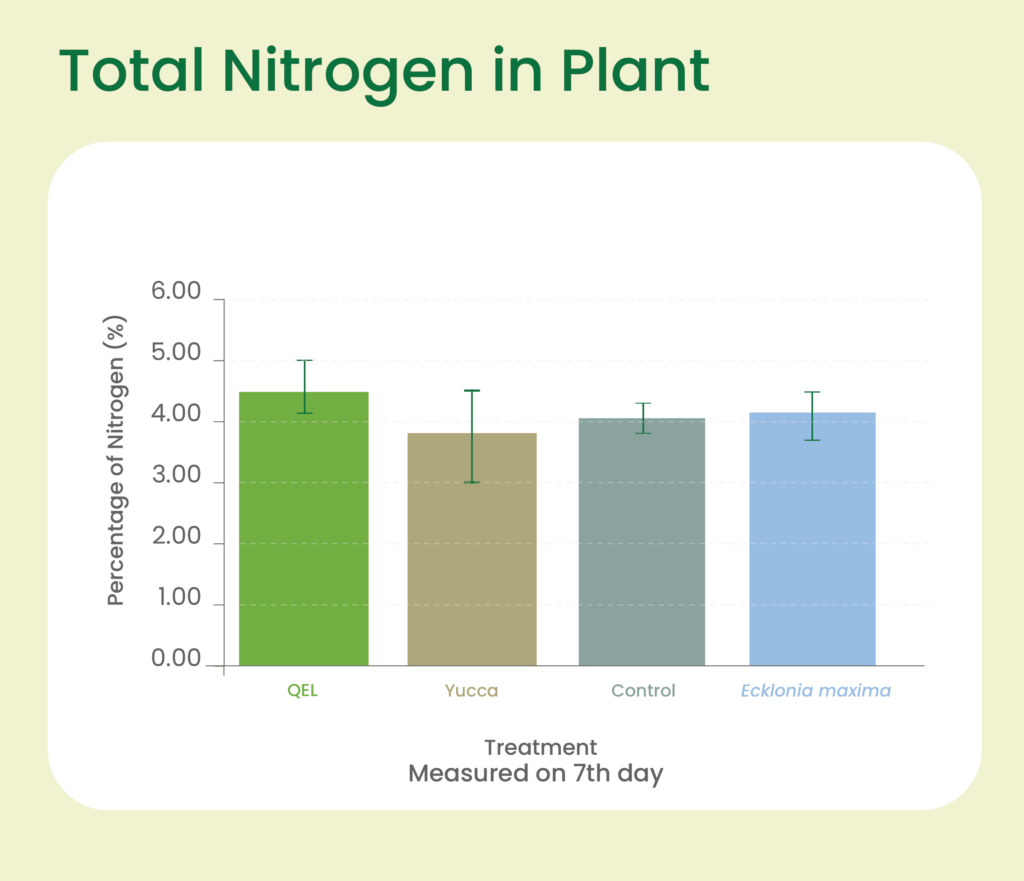At Plantae Labs, we’re excited to introduce QEL, a proprietary quillaja solution that represents a breakthrough in sustainable agriculture. Developed as part of CORFO (project 22PTECCC-219373), led by Sebastián Delbene, QEL is a plant solution rich in auxins and cytokinins, obtained through upcycling industry byproducts. This innovative approach not only supports plant health but also contributes to reducing environmental waste, positioning QEL as an eco-friendly solution that enhances modern agricultural practices.
While QEL provides multiple benefits for plants, its ability to promote root growth stands out as one of its strongest attributes. Enhanced root systems enable better nutrient and water absorption, improve crop resilience, and boost yield potential—all while reducing the need for chemical inputs. By repurposing natural industry byproducts, Plantae Labs demonstrates a commitment to sustainable innovation and responsible resource use.

Data collected on Day 30 after planting shows the effects of different treatments on root length and dry weight.
Note: The comparison products used in this study were based on a commercial North American product formulated from Yucca schidigera with 50 degrees Brix, applied at the recommended dosage according to the label.
QEL Phytohormones: A Natural Boost for Root and Plant Growth

QEL’s phytohormonal content is what sets it apart from other solutions. These natural compounds, including auxins and cytokinins, play a key role in the regulation of various physiological processes in plants.
Auxins: stimulate root growth, which strengthens the plant’s ability to absorb water and nutrients, resulting in a more resilient and productive plant.
Cytokinins: contribute to tissue elongation and chlorophyll synthesis, improving photosynthesis and overall plant vitality.
Chlorophyll in Wheat Seedlings
The application of QEL significantly increased chlorophyll levels in wheat plants. This enhancement can be attributed to the action of cytokinins, which play a crucial role in chlorophyll synthesis. By boosting chlorophyll concentration, plants are better equipped to capture more sunlight, leading to improved energy absorption.

Increased chlorophyll levels also enhance the photosynthesis rate, allowing plants to convert sunlight into energy more efficiently. This improvement translates to better overall growth and vitality, enabling plants to respond more effectively to environmental stressors. The result is healthier wheat crops with a greater potential for yield and resilience, ultimately contributing to enhanced agricultural productivity.
Enhancing Soybean Root Growth
One of the standout benefits of QEL is its impact on root development, particularly in soybeans. Larger, healthier root systems not only improve water and nutrient absorption but also bolster the plant’s resistance to environmental stressors. This results in stronger, more resilient crops that are better equipped to thrive even in challenging conditions.

Boosting Nitrogen Absorption in Tomato Plants
In addition to root growth, QEL has been shown to increase nitrogen absorption in tomato plants. This leads to better overall plant health, stronger foliage, and ultimately higher yields. By optimizing nutrient absorption, QEL helps reduce the reliance on chemical fertilizers, supporting a more sustainable agricultural model.

An Excellent Alternative for Early Crop Establishment
QEL exemplifies Plantae Labs’ dedication to providing effective solutions for the crucial early stages of crop growth. By utilizing natural industry byproducts through an upcycling process, we’ve created a proprietary quillaja solution that promotes robust root development and enhances nutrient absorption, particularly during the initial phases of crop establishment.
Farmers using QEL can expect enhanced root growth and stronger seedlings, which boost overall crop quality and resilience. This innovative approach improves nutrient use efficiency while contributing to more sustainable farming practices.
As part of CORFO project 22PTECCC-219373, QEL reflects our commitment to advancing eco-friendly innovations in the agricultural sector, enabling farmers to achieve optimal crop establishment while fostering long-term environmental stewardship.
References:
- Seiwa, K. (2000). Effects of seed size and emergence time on tree seedling establishment: Importance of developmental constraints. Oecologia, link.springer.com.
- Lamichhane, J.R. (2019). Emerging agrochemical management strategies: A step towards sustainable agriculture. Advances in Agronomy, sciencedirect.com.
- Liu, X. et al. (2017). Influence of nutrient availability on root architecture and resource allocation in plants. Frontiers in Plant Science, frontiersin.org.
- Agathokleous, E. et al. (2020). Environmental stress and plant growth: New findings on plant stress physiology. Science of the Total Environment, sciencedirect.com.
- Ryan, P.R. et al. (2016). The influence of root architecture on soil nutrient absorption: The role of auxins in root elongation. Plant Physiology, pmc.ncbi.nlm.nih.gov.
- Masclaux-Daubresse, C. et al. (2010). Nitrogen uptake and utilization in plants: Mechanisms and improvements for plant performance. Plant Cell Environment, pmc.ncbi.nlm.nih.gov.
If you want to know more about our proprietary solutions for plant health, visit our website: www.plantaelabs.com/plant-health/


